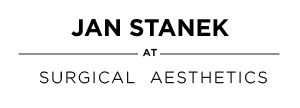PIP Silicone Breast Implants - JPRAS
/Journal of Plastic, Reconstructive & Aesthetic Surgery
Dear Sir
We read the Quabas paper reporting their experience of PIP breast implant management with great interest. The authors had an enviably high follow up and should be congratulated on providing such robust data at a time of renewed uncertainty as to the long-term safety of PIP's mammary devices.
They kindly reference our preliminary study and draw attention to the low (9.3%) explantation figure, which initially provoked criticism of our reported rupture rate. The authors will not have been aware of our recently accepted update, but we are pleased that another large series has drawn similar conclusions about the PIP implant. Whilst a summary comparison (table 1) evidences our improved re call and confirmation, we remain an order of magnitude in arrears. Their very high recall, perhaps reflecting the benefits of a large company, in this case Spire Healthcare, that both proactively sought patients and underwrote all costs.
There are several noteworthy observations: the first that there are now three sizeable studies, with slightly different methodologies, yielding similar rupture prevalences. The Quabas explanation, our own intention-to-treat and Maijers et al.'s MRI study. The second being the quantum improvement in the accuracy of ultrasound scan (USS) lately. Whilst we have all expreienced examples of catastrophic PIP elastomer disintegration, and concur that such ruptures are easy to spot sonographically, it is not our experience that this is universal so USS appears to a recommendable first line investigation. Thirdly, although the trial is in progress in Marseille at the the time of writing, the alleged perpetrators have yet to assist with any detailed information so it is reassuring that our original finding of reducing implant durability with time has been corroborated. As with Quaba, prostheses implanted in the year 2000 fared no differently to their contemporaries, however, by 2005 median time-to-rupture had almost halved from 10.5 to 5.8 years. Finally, despite the huge amount of negative media coverage over the past 3 years, a...








